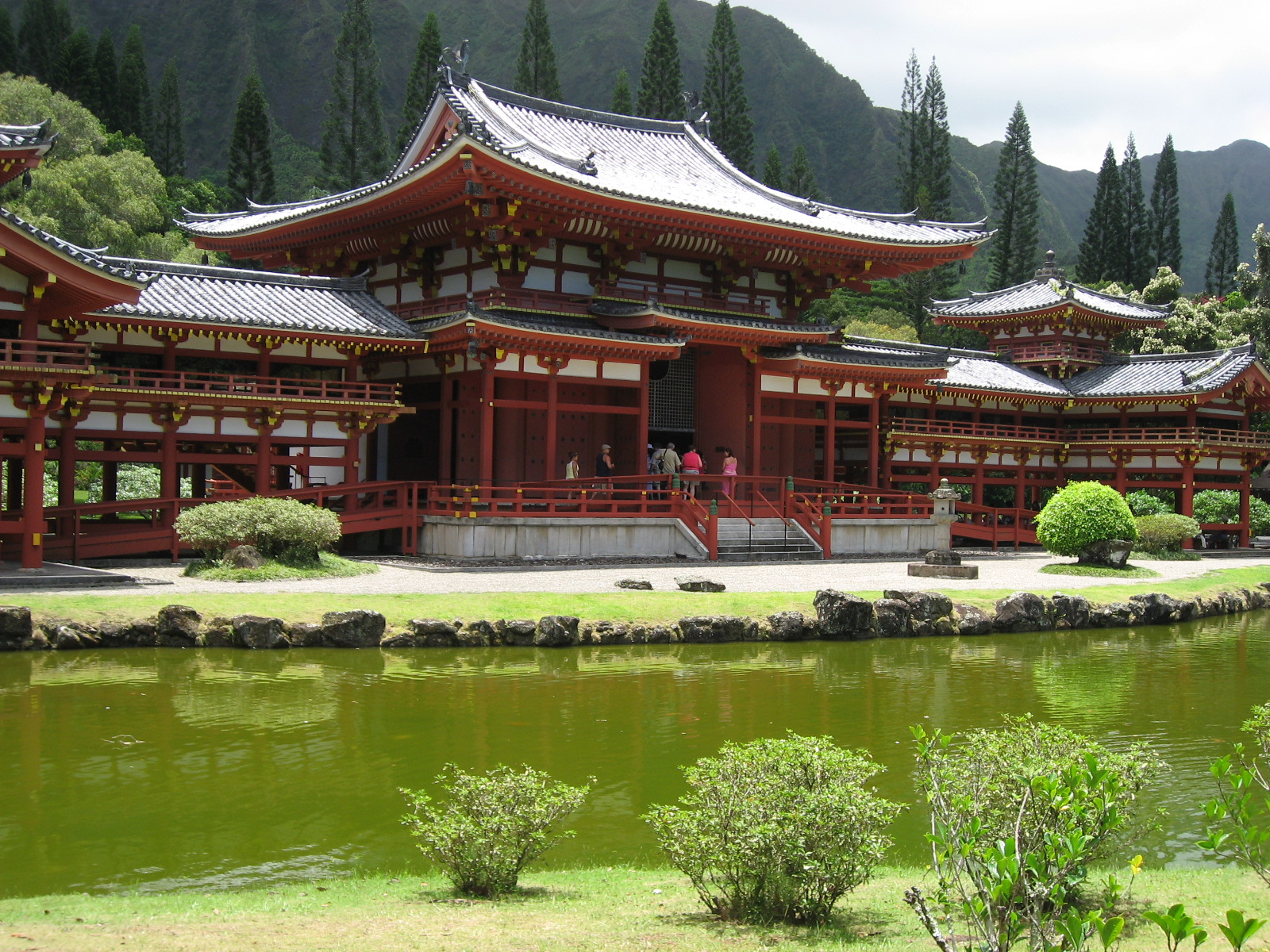We introduce one of Kyoto’s historical buildings, the Byodo-in temple. Byodo-in temple is popular with Japanese tourists, and it is also known as a place where Japanese children often visit for school excursions.
Why was Byodo-in Temple built?
Byodo-in was built in 1052 (the Japanese era Eisho 7) and during the Heian period.
At that time, the idea of pessimism due to decadent-age theory was widespread in Japan.
This thought is that after the death of Buddha (the founder of Buddhism), after 2000 years, Buddhist law diminished, and the world was disturbed.
1052 when Byodo-in was built is the year 2000 just after the death of the Buddha.
In Japan at that time, disasters such as natural disasters, starvation and plagues continued, and people at that time thought that the end of the world was approaching and wanted to be saved in the next world.
Among them, Byodo-in Temple is a temple built by Yorimichi Fujiwara of those days. Byodo-in was originally called “Uji-den”, and it was a villa site of Michinaga Fujiwara. The son, Yorimitchi, built a temple called Byodo-in in 1052, and the following year, he built an Amidanyoraido (the current Zendo), which holds an Amida-nyorai statue.
The world of Gouraku Pureland, where Yoritomo, a Heian-era authority, built up with all his wealth, is very valuable to convey the ideas of the Pure Land of that time to the present. In 1994, it was also registered as a UNESCO World Heritage Site.
In addition, the Byodo-in temple is also known as a 10-yen coin design that is very familiar to Japanese people. The money designer in charge at the time may have been fascinated by the beauty of Byodo-in temple.

Byodo-in is designed for 10 yen in Japan
Image source : https://ja.wikipedia.org/wiki/%E5%8D%81%E5%86%86%E7%A1%AC%E8%B2%A8
A view of the garden that you can not miss it
The gardens of Byodo-in were designated as National Historic Sites and Scenic Spots in 1922. It is called “Jodo-style garden” which tried to reproduce the paradise pure earth in this world. It is one of the most popular Japanese gardens from the Heian period to the Kamakura period, and is strongly influenced by the Buddhist Pure Thought.
There is a pond called Aji-ike (Ajiike) near the temple. It is said that it represents the Takara Pond in Gokuraku Pure Land. On a sunny day, the Aji Pond will have a view of the temple and you will be in a very solemn feeling.

Also, don’t forget the beautiful flowers of the garden during the four seasons. You can appreciate flowers such as spring cherry blossoms, wisteria and moss, and the most recommended one is the lotus that blooms in summer. It grows out of muddy water and blooms beautiful flowers. In Buddhism, lotus is considered to be a symbol of wisdom and mercy. That will surely heal your heart.

If you buy souvenirs Byodo-in museum shop
You can buy souvenirs related to Byodo-in at the museum shop attached to Byodo-in Museum Shoshokan. In addition, some products such as books, stationery, cosmetics, netsuke, key chains, sundries, cloth products, scented products, tea, etc. can be purchased from the online store (http://www.byodoin.com/).
Above all, what we want to recommend the most is Byodo-in towel (1700 yen) in which the figure that Byodo-in temple hall reflected in Ajiike is printed. The materials of the Japanese-style washcloth are very vivid, the amber of the building and the light blue of the Aji Pond. It will be surely a memory of a wonderful trip.
We also recommend a compact mirror (1200 yen) with a golden background on a black background. It is a very fashionable design that gives a sense of Japanese history and culture.

Image source : http://www.byodoin.com/shopdetail/000000000026/cloth/page1/order/

Image source : http://www.byodoin.com/shopdetail/000000000026/cloth/page1/order/
Access to Byodo-in, etc.
Location
Uji City Uji Lotus Flower 116 Kyoto Prefecture
By train
17 minutes from Kyoto Station to Uji Station on JR Nara Line (Miyako Road Rapid)
10 minutes walk from Uji Station.
Map
Visiting time
・ Gardens 8:30 to 17:30 (17:15)
・ Inside view of Tsujido 9:30-16:10 (every 20 minutes, 50 people each time)
※ May 13-November15, 2019, The internal visit is canceled all day for repair.
Admission fee
Garden + Byodo-in Museum Shoshokan
Adult 600 yen, middle and high school student 400 yen, elementary school student 300yen
Hououdo inside
300 yen per person.


